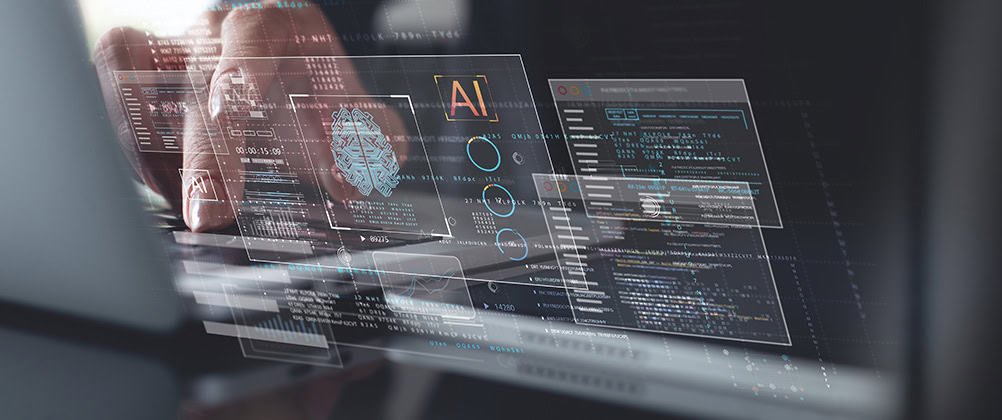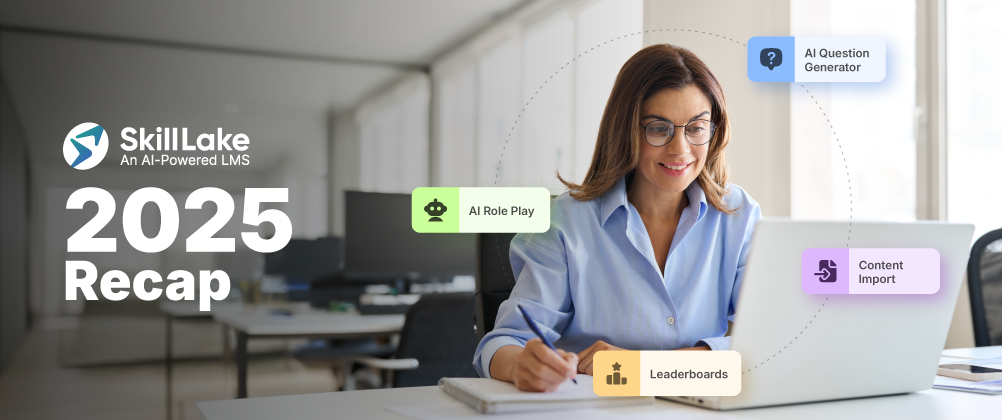Learning and Development Trends for 2022 and Beyond!

The new normal has presented organizations with several issues, such as the need to manage a remote and hybrid workforce. The corporate learning and development (L&D) team got struck harder than any other department. Corporate training teams are a crucial component of organizational development, and their programs are designed to upskill personnel and fill the market’s perceived knowledge and skills gap. Managing change in the face of a pandemic and new health hazards has necessitated the development of unique techniques for setting and achieving milestones.
Here are the top 12 trends in learning and development to look out for in 2022 and beyond.
Emerging Trends in Learning and Development
1. Reskilling & Upskilling
Your current workforce requires retraining to use new digital tools and processes due to digital transformation. A new emphasis on the ongoing upskilling programs got added to organization-wide reskilling. Since many businesses prefer to promote their employee skills from within, upskilling may take the shape of leadership training. With the introduction of online eLearning courses through modern learning platforms, upskilling has become simpler for the corporate sector. With flexible learning, providing time off, and rewards for passing these courses, L&D teams can also encourage internal workforces to acquire new skills.
2. Personlaized & Adaptive Learning
Adaptive learning is the most sought-after corporate training method companies adopt. It uses AI and machine learning techniques to deliver employees personalized training and learning experiences that can address their unique needs. In the coming years, it is predicted that personalized learning will be in great demand. Thus, this AI-powered, data-driven approach to training supports the L&D teams to guarantee fruitful and efficient employee training.
3. Microlearning
Breaking up L&D course material into brief, digestible learning units—usually no longer than five minutes—is known as microlearning. Microlearning helps L&D teams to get creative with their learning materials. It can take the shape of daily assignments, films, in-app tooltips or walkthroughs, and much more. Additionally, L&D teams can encourage microlearning content by gamification of employee education and training assignments. This form of content is also simpler to repurpose and refresh. And it helps in easy knowledge retention.
Read more: A Guide To Understanding Microlearning And How It Improves Learner Engagement!
4. Mobile Knowledge Delivery
Mobile devices are an integral part of life today. Learning from anywhere, anytime, and from any device is the new way of training and learning. The modern L&D platforms are compatible with smartphones, tablets, or other devices to make learning convenient and easy. In today’s busy work schedules, the best feature that eLearning solutions can provide is the flexibility to learn anytime, anywhere, at the learners’ convenience.
5. Blended Learning Programs
The blended learning approach provides self-paced learning, instructor-led sessions, or a combination of both to improve learning outcomes. Learners have the flexibility to learn at their own pace without any restrictions on time and place. Furthermore, it helps in better comprehension and improving the engagement level of employees.
6. Greater Emphasis on Soft Skills
Soft skills are in huge demand today, irrespective of whether the employee directly interacts with the client. Communication, leadership, and collaboration skills rank above empathy compared to how solid technical skills an employee has mastered. Cultivating soft skills always leads to improving performance and productivity and opens up better opportunities for them to advance in their career.
7. Assessment Tools
Organizations are willing to adopt assessment tools to analyze skill gaps and bridge those gaps. Identifying the gaps helps them better plan and provide relevant training programs to close the skill gaps. These tools also allow them to measure the effectiveness of their L&D initiatives, track the learners’ progress, and understand the current and future skill requirements.
8. Niche Platforms
Unlike multi-purpose HR and L&D technologies, specialty platforms serve a single goal in depth. A modern learning management system is an example of a niche specialist platform. Although multi-purpose platforms provide the ease of having all activities and information in one location, they will occasionally fail to satisfy your needs. Navigating the scale and complexity of the HR and L&D space necessitates specialized tools. Combining and integrating these into a single-employee environment is critical to meeting your learning objectives in the future.
Read more: How an L&D Platform Simplifies The Onboarding and Employee Experience Journey?
9. Collaboration and Social Learning
The latest trend in eLearning solutions like LMS or LXP stimulates collaborations and social learning. Social and collaborative tools like games and forums boost employee engagement and make learning enjoyable. Social learning makes learning more engaging and productive as counterparts, or skillful experts collaborate to share and discuss informative knowledge that helps each other to grow together and achieve learning goals.
10. Real-time Employee Feedback
Another exciting technology trend in learning and development to look out for is that L&D teams seek to improve feedback channels between trainers and employees. Modern eLearning platforms provide real-time employee feedback through surveys, discussions, and questionnaires, among other forums.
11. Knowledge-Sharing Ecosystem
Knowledge management is creating, curating, organizing, and disseminating vital organizational knowledge so that employees can access and locate it. Most eLearning solutions provide a centralized repository to store their learning materials that help ease employees’ access when needed. In a nutshell, it connects employees to the appropriate resources for any inquiries they may have.
12. Gamification
Gamification is a happening trend that is adopted by most eLearning platforms. Gamifying elements like badges, virtual rewards, and point-system makes learning fun and motivates learners to attend courses. It also supports peer-to-peer learning and virtually collaborating with each other. Gamified learning promotes a positive workplace culture and helps employees and organizations grow together.
Summing Up!
L&D teams are at the forefront of digital change in these uncertain times. They are in charge of upskilling and reskilling people and adopting emerging technology and processes. Although some of these learning and development trends have existed for some time, they have grown significantly and have become more popular since the pandemic. You must now assess which trends apply to you and adjust your corporate training strategies accordingly. The emerging trends in learning and development show us that learning will be more personalized, mobile, and goal-oriented with online learning management systems.
Sign Up with Skill Lake today and seamlessly employ the latest trends of L&D!
Build a culture of continuous learning with Skill Lake’s state-of-the-art people development platform. Give your employees professional training to help them excel in their job roles and propel your business to greater efficiency and success.
Start Today

Ashmitha Chatterjee
Ashmitha is a learning and development enthusiast who shares her insights on e-learning. She loves to create engaging and informative content and is dedicated to helping people learn and grow through her deep expertise in the field.